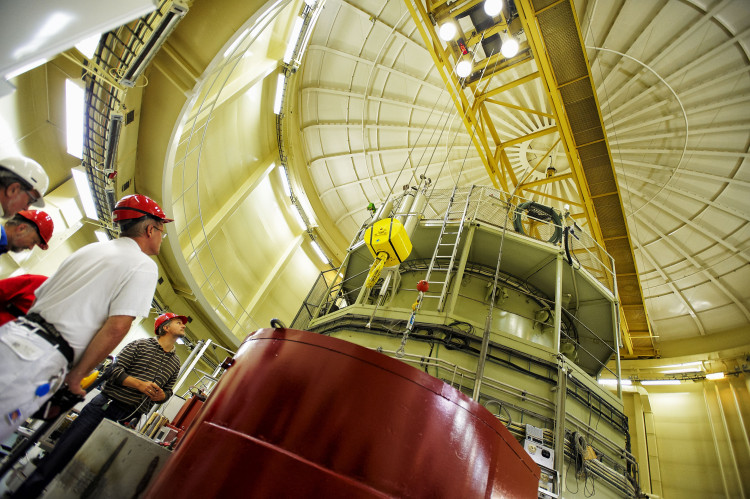An International Atomic Energy Agency (IAEA) team of experts said the operator of a research reactor in Norway showed transparency and continuous commitment to safety. The team also made recommendations for further improving the effectiveness of the operator’s organizational structure and staff training as well as operational safety.
The Integrated Safety Assessment for Research Reactors (INSARR) team concluded a nine-day mission today to assess the safety of the JEEP II reactor, which was commissioned in 1967. The 2000 kW reactor is operated by the Institute for Energy Technology (IFE) at the Kjeller research centre, located about 25km north-east of Oslo. The main purposes of the reactor are basic research in neutron physics, the production of medical and industrial isotopes, and irradiation services and experiments.
“IFE shows a commitment to safety and has initiated several activities to develop and maintain a strong culture for safety. IFE has also made good progress in establishing an effective programme for the refurbishment and modernization of the reactor systems,” said team leader Amgad Shokr, Head of the Research Reactor Safety Section at the IAEA. “In the meantime, there is a need for further improvements in these areas as well as in areas related to training and qualification, safety documentation, operational radiation protection, and operating instructions.”
The eight-member team comprised experts from Argentina, Australia, France, the Netherlands and South Africa as well as three IAEA officials. The mission covered organizational and management issues as well as technical areas including safety assessment, operation and maintenance programmes, radiation protection, radioactive waste management, and emergency preparedness. The team visited the reactor and associated facilities, and met with IFE officials.
The team appreciated the openness and transparency of IFE staff and in particular their efforts in establishing and implementing a national strategy for managing spent fuel and radioactive waste, and in developing a decommissioning plan for the reactor. It also observed continued improvement in the effectiveness of the IFE safety committee, emergency preparedness and routine maintenance of reactor systems and components.
“Safety comes first for IFE, and we work continuously to improve safety and safety culture,” IFE President Nils Huseby said. “The IAEA INSARR mission provided us with valuable recommendations and suggestions in this regard, and we are committed to implementing them. IFE will also continue developing and maintaining a strong culture for safety with support from IAEA during a peer review mission on this area in 2018.”
The mission made several recommendations for improvements, including:
- Strengthening the reactor’s operational organizational structure by clarifying the roles and responsibilities of staff to avoid potential conflict of duties and authorities, assigning a radiation protection officer dedicated to the reactor, and establishing a JEEP II safety committee.
- Developing further an integrated management system that supports continuous development and maintenance of a strong culture for safety, particularly in view of IFE restructuring under consideration.
- Establishing a formal continuing training programme for reactor staff.
- Enhancing the operational radiation protection programme through improvement to existing radiation monitoring practices.
- Completing the revision of the reactor safety and operating documents to reflect recent reactor refurbishment and modifications.
The reactor operator said that it will make the INSARR mission report publicly available and will request a follow-up mission by early 2019.
About INSARR Missions
INSARR mission is an IAEA peer review service, conducted at the request of a Member State, to assess the safety of research reactors based on IAEA safety standards. General information about INSARR missions can be found on the IAEA Website.


